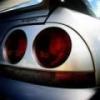Turbosmart Boost Tee Vs Turbtech
Announcements
-
Similar Content
-
Latest Posts
-
By Murray_Calavera · Posted
Hmm not really, I'd say its race car life or modified car life when you make 3 or 4 times the power Nissan designed the car for lol. -
I'll let others with more breakage chime in, but I can't think of anyone who had a problem with the standard centre plate before they had a problem with the standard gears - the plate generally just gets replaced for safety when the gearset is upgraded. As for the gearsets, its not like they are OK at 600Nm and break at 601. Their longevity is a combination of how much torque you are making and how gentle you are on shifts (or not).
-
Impossible to remove the housing while turbo is installed on the manifold on the engine. So I have to do it anyways. I plugged it so there will not be any debris in there. Will vacuum aswell
-
would a r34 gtr hood line up with gt/gtt stock fenders? after latch, front bumper and hinges are swapped for gtr ones? or would the fenders be too low or high in relation to the hood surface? ( I believe seeing somewhere that gtr front fenders use some type of riser for the sides, but do not know how that relates to stock gt/gtt fenders.)



1.thumb.png.36afd656b26d55f5d425fc76e21561f2.png)
Recommended Posts
Create an account or sign in to comment
You need to be a member in order to leave a comment
Create an account
Sign up for a new account in our community. It's easy!
Register a new accountSign in
Already have an account? Sign in here.
Sign In Now